浅显易懂,推荐
一、课程介绍
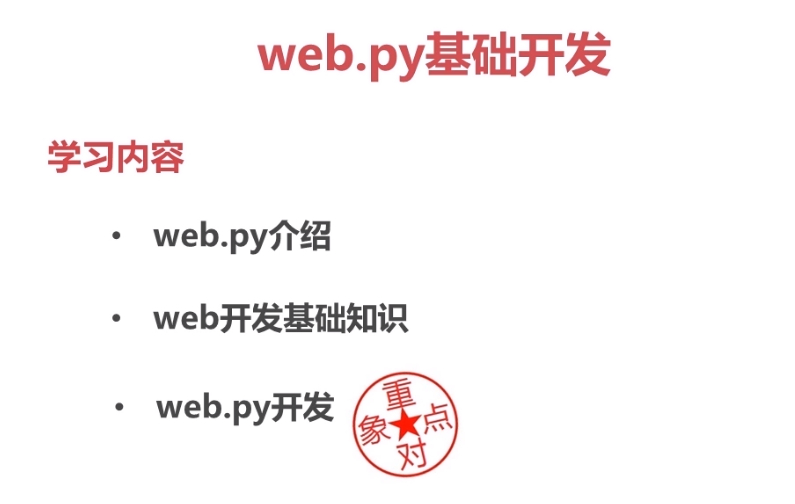
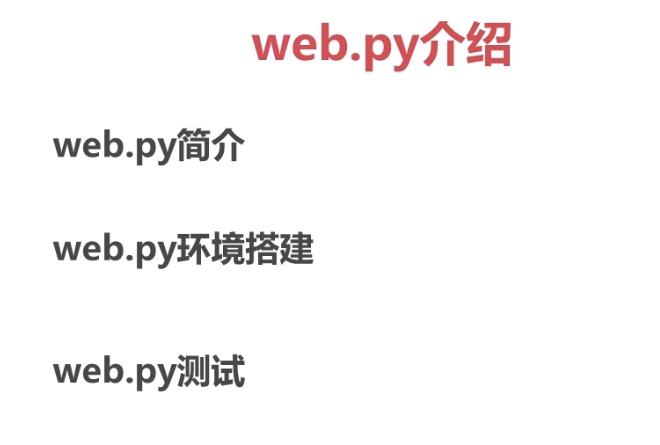
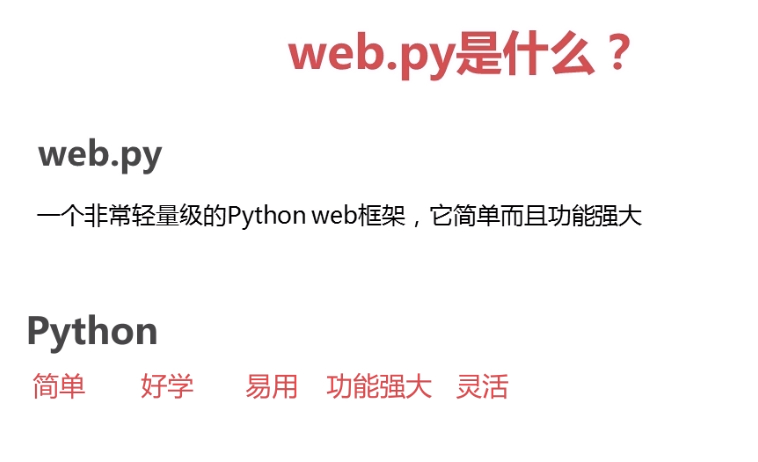
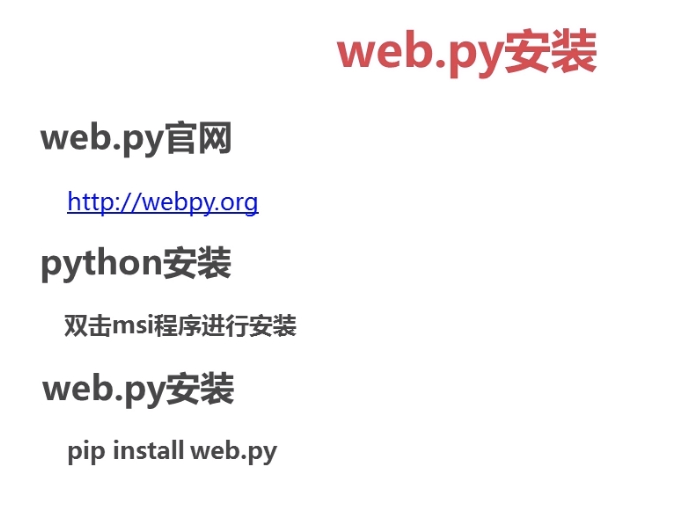
web.py官网:http://webpy.org
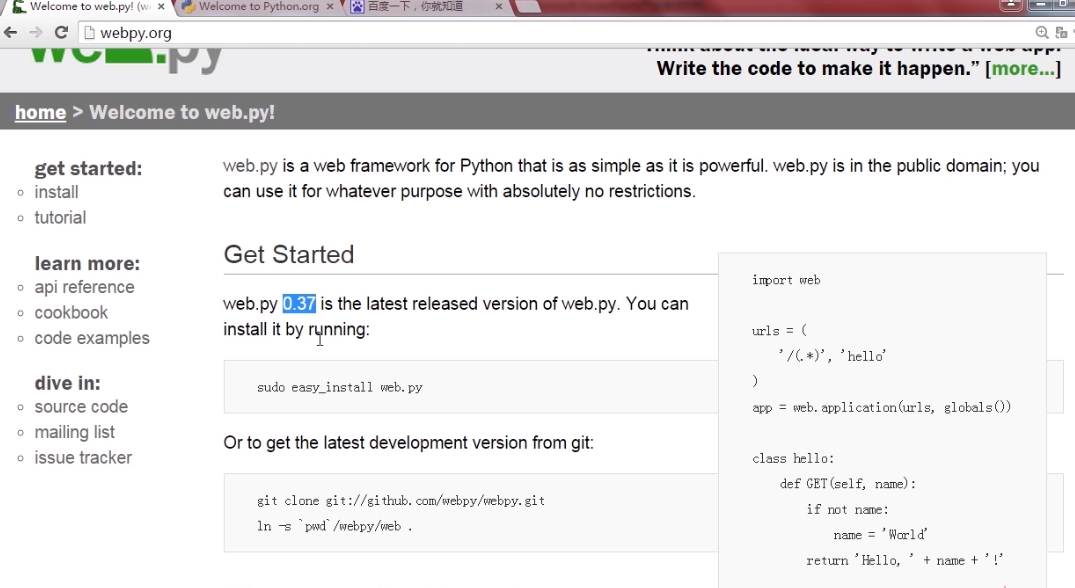
版本基本不会更新,作者去世
pip install web.py #在python2.7环境下
pip3 install web.py--0.40-dev1 #在python3环境下安装webpy
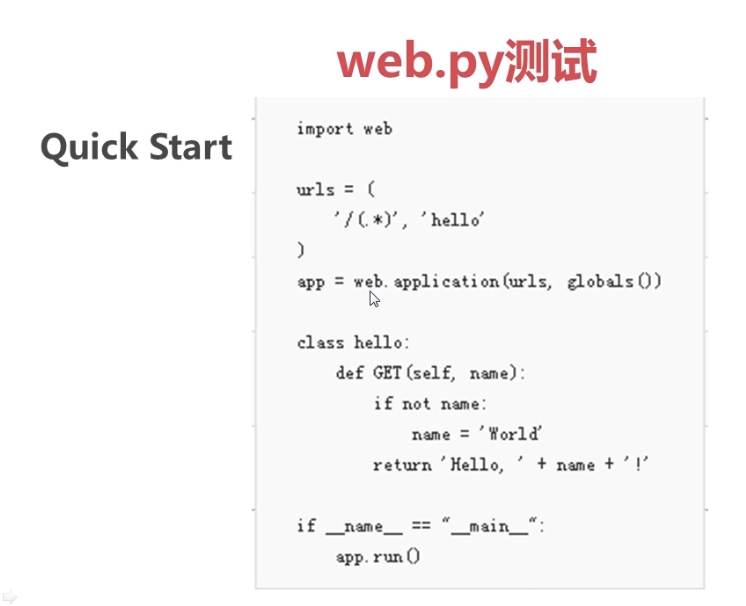
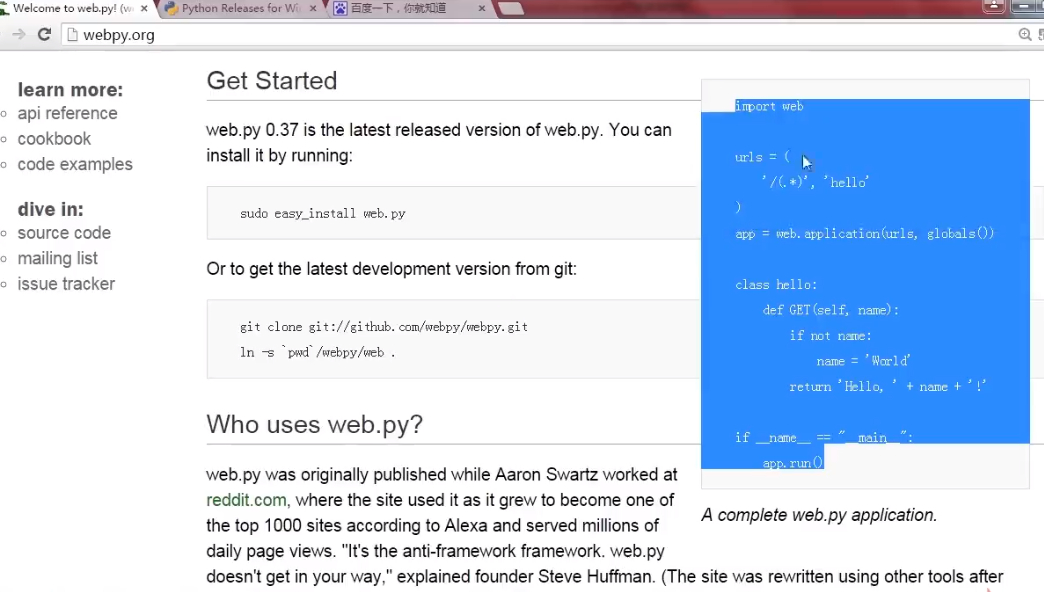
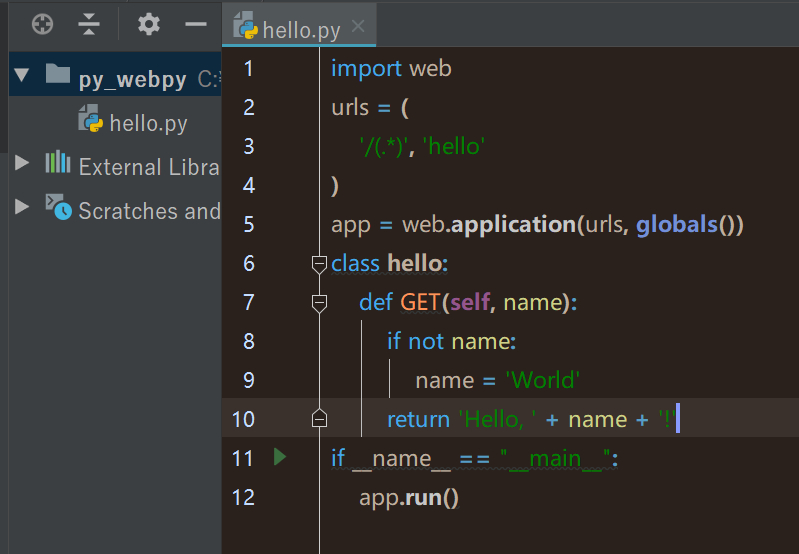
import web
urls = (
'/(.*)', 'hello'
)
app = web.application(urls, globals())
class hello:
def GET(self, name):
if not name:
name = 'World'
return 'Hello, ' + name + '!'
if __name__ == "__main__":
app.run()新建hello.py
python hello.py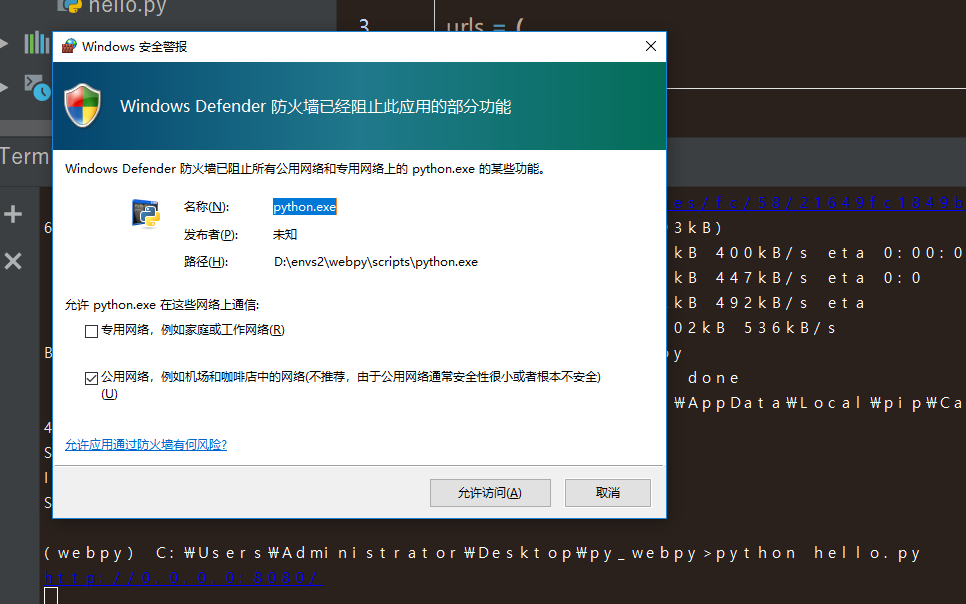
输入运行文件命令。(我这里pycharm2018.2不晓得为嘛terminal调整不了字间距,而且文件路径的/都变了,文字颜色也不晓得哪里能改,其他地方的显示都正常也能修改,这里除了文字大小能调整外,别的都不起作用。TVT)
返回0.0.0.0:8080

浏览器访问127.0.0.1:8080
——————————————————————————————————————
PS:0.0.0.0与127.0.0.1区别:https://blog.csdn.net/searchwang/article/details/33804265
0.0.0.0
严格说来,0.0.0.0已经不是一个真正意义上的IP地址了。它表示的是这样一个集合:所有不清楚的主机和目的网络。这里的“不清楚”是指在本机的路由表里没有特定条目指明如何到达。对本机来说,它就是一个“收容所”,所有不认识的“三无”人员,一律送进去。如果你在网络设置中设置了缺省网关,那么Windows系统会自动产生一个目的地址为0.0.0.0的缺省路由。
127.0.0.1
本机地址,主要用于测试。用汉语表示,就是“我自己”。在Windows系统中,这个地址有一个别名“Localhost”。寻址这样一个地址,是不能把它发到网络接口的。除非出错,否则在传输介质上永远不应该出现目的地址为“127.0.0.1”的数据包。
127.0.0.1与本地IP:127.0.0.1是自环地址,也就是回路地址,PING通了说明网卡没有问题,因此发往127的消息不会出网卡。
————————————————————————————————————————
二、web.py开发
1.demo
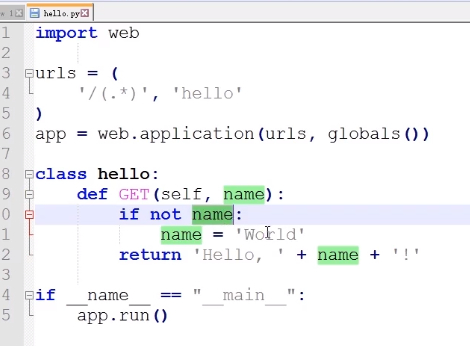

name
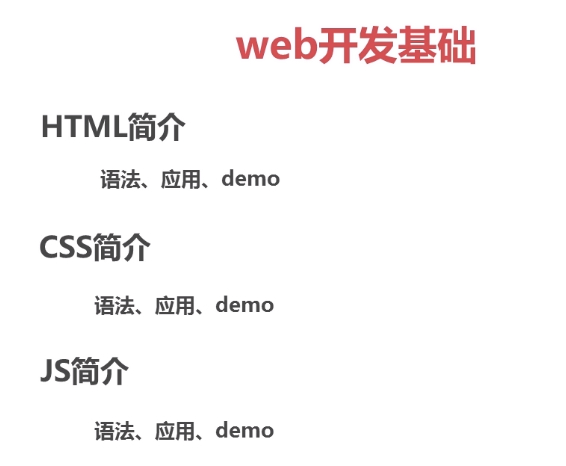
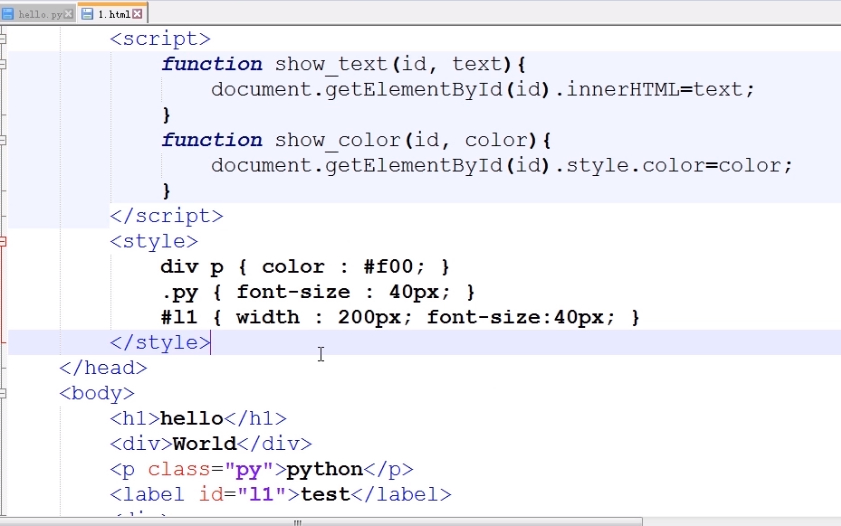
一些前课程前端代码
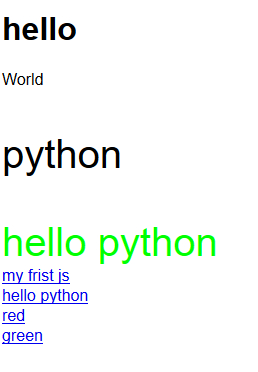
<!DOCTYPE html>
<html lang="en">
<head>
<meta charset="UTF-8">
<title>hello</title>
<style>
div p{color: #f00;}
.py{font-size: 40px}
#l1{width: 200px;font-size: 40px}
</style>
</head>
<body>
<h1>hello</h1>
<div>World</div>
<p class="py">python</p>
<label id ='l1'>test</label>
<div>
<a href="javascript:void(0)" onclick="javascript:show_text('l1','my frist js')">my frist js</a>
<a href="javascript:void(0)" onclick="javascript:show_text('l1','hello python')">hello python</a>
<a href="javascript:void(0)" onclick="javascript:show_color('l1','#f00')">red</a>
<a href="javascript:void(0)" onclick="javascript:show_color('l1','#0f0')">green</a>
</div>
<script>
function show_text(id, text) {
document.getElementById((id)).innerHTML=text
}
function show_color(id, color) {
document.getElementById(id).style.color=color
}
</script>
</body>
</html>新建1.html文件
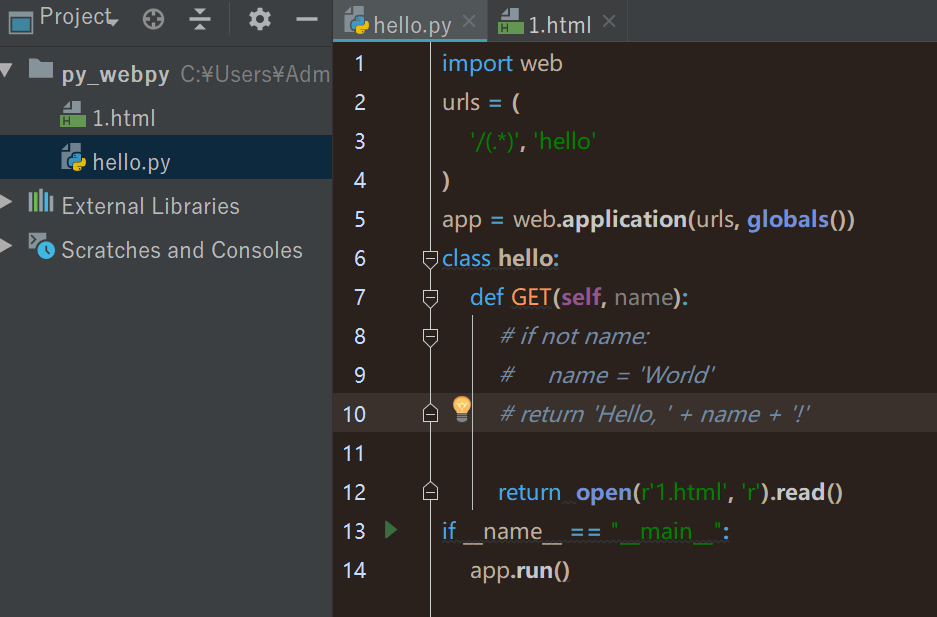
测试返回1.html内容
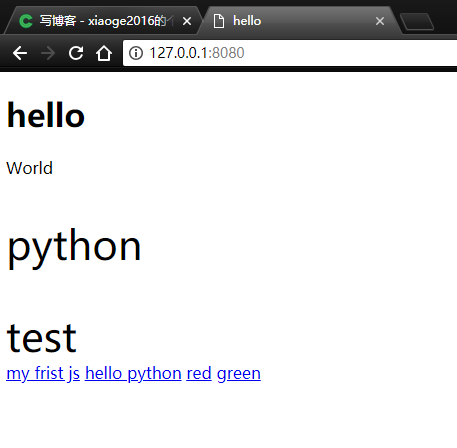
2.web.py学习
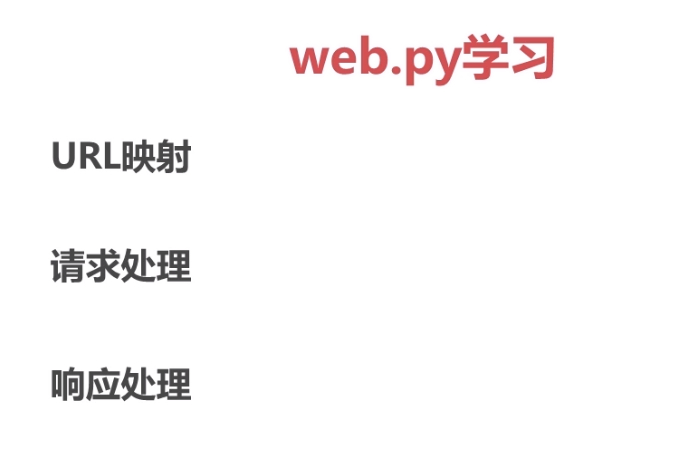
(1)url映射
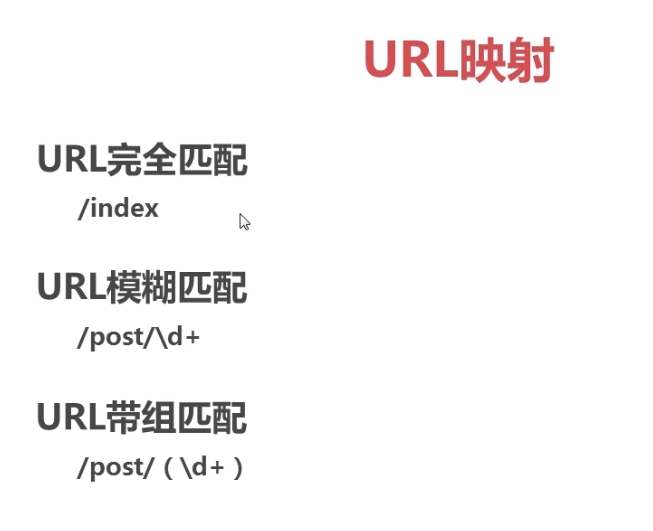


import web
urls = (
'/index', 'index', #精确匹配
'/blog/\d+','blog', #模糊匹配-带组
'/(.*)','hello' #模糊匹配-不带组
) # 注意:url里有多个使用模糊匹配,模糊匹配范围大的要放在小的后面
app = web.application(urls, globals())
class index:
def GET(self):
return 'index method'
class blog:
def GET(self):
return 'blog method'
def POST(self):
return 'blog post method'
class hello:
def GET(self, name):
return 'hello' + name
if __name__ == "__main__":
app.run()hello.py获取路径
(2)请求处理
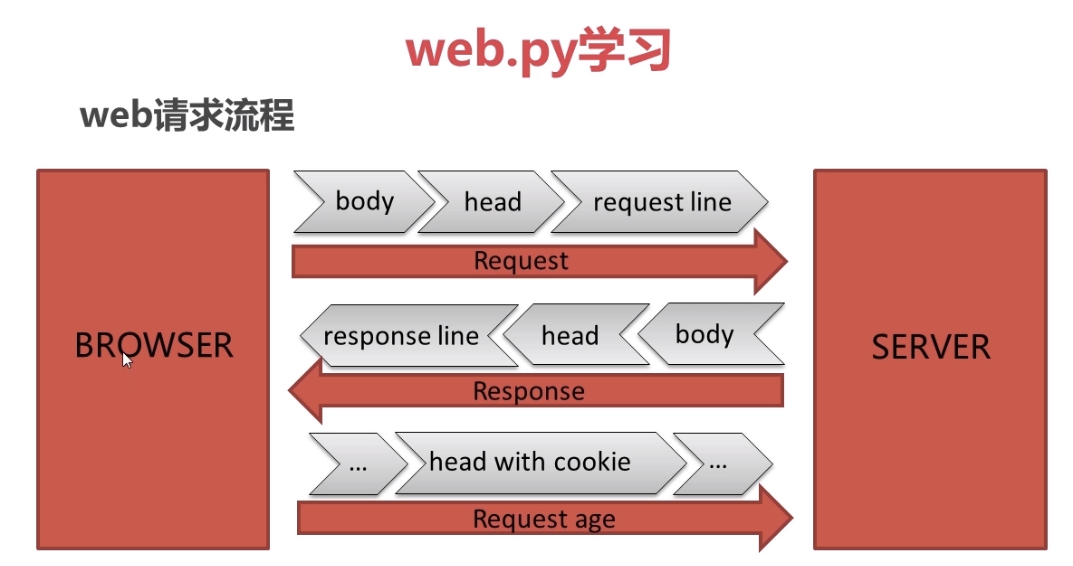
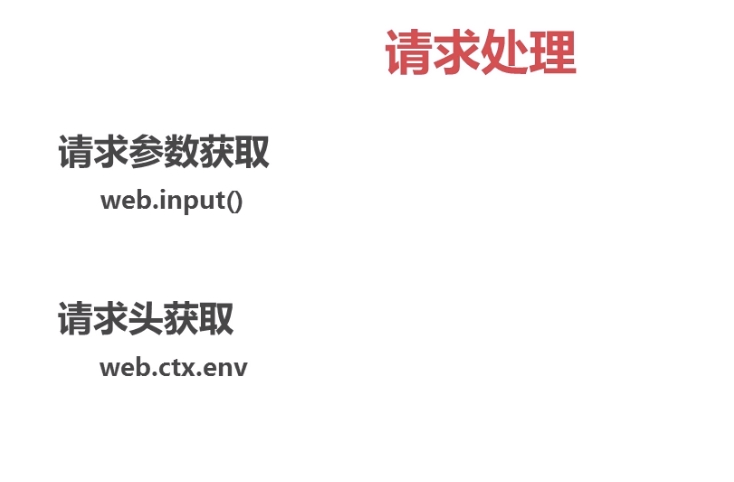
A.请求参数获取
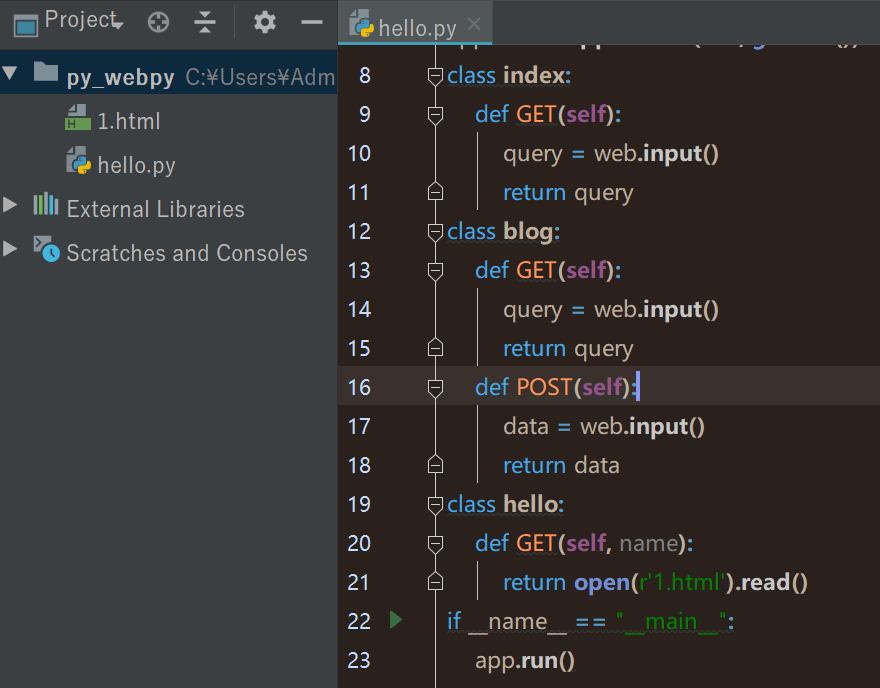
添加参数获取
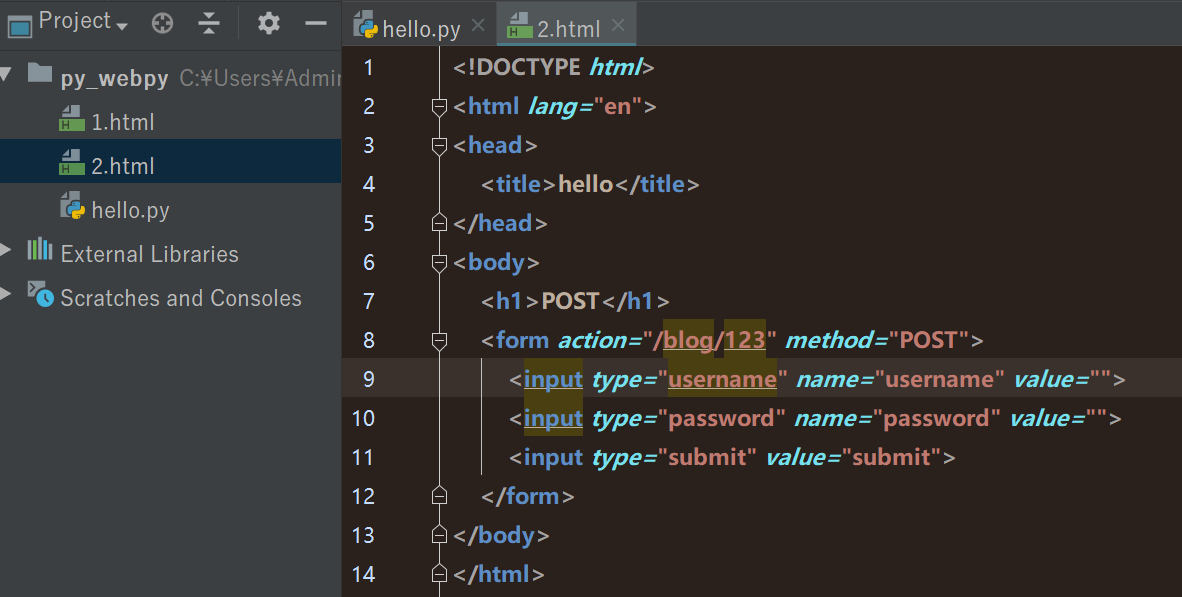
<!DOCTYPE html>
<html lang="en">
<head>
<title>hello</title>
</head>
<body>
<h1>POST</h1>
<form action="/blog/123" method="POST">
<input type="username" name="username" value="">
<input type="password" name="password" value="">
<input type="submit" value="submit">
</form>
</body>
</html>新建2.html
import web
urls = (
'/index', 'index', #精确匹配
'/blog/\d+','blog', #模糊匹配-带组
'/(.*)','hello' #模糊匹配-不带组
) # 注意:url里有多个使用模糊匹配,模糊匹配范围大的要放在小的后面
app = web.application(urls, globals())
class index:
def GET(self):
query = web.input()
return query
class blog:
def GET(self):
query = web.input()
return query
def POST(self):
data = web.input()
return data
class hello:
def GET(self, name):
return open(r'2.html').read()
if __name__ == "__main__":
app.run()hello.py




B.请求头获取
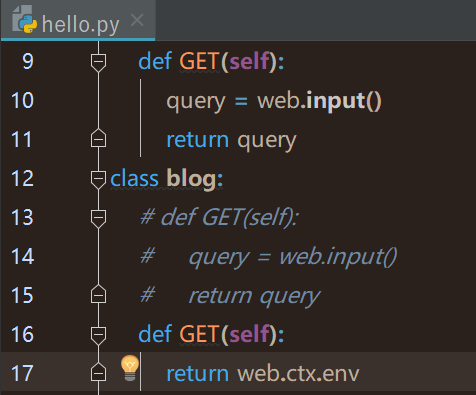
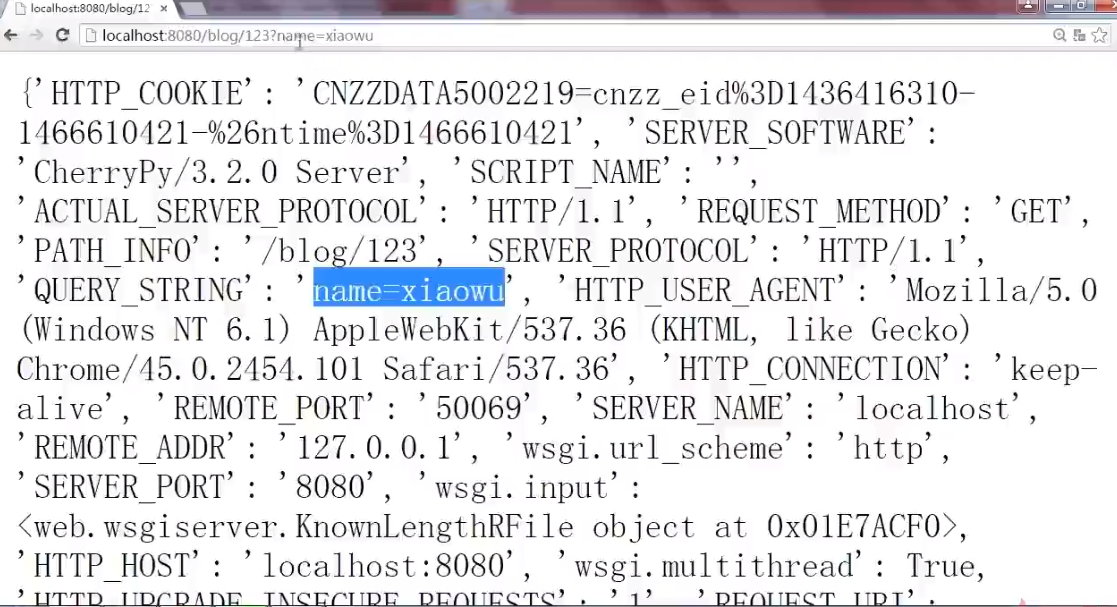
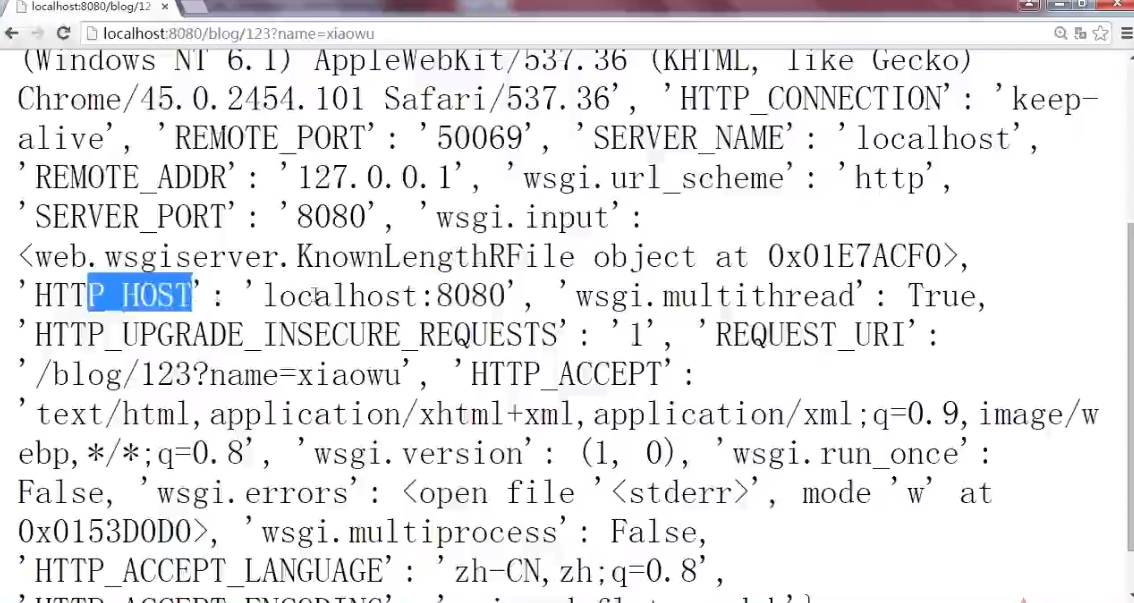
import web
urls = (
'/index', 'index', #精确匹配
'/blog/\d+','blog', #模糊匹配-带组
'/(.*)','hello' #模糊匹配-不带组
) # 注意:url里有多个使用模糊匹配,模糊匹配范围大的要放在小的后面
app = web.application(urls, globals())
class index:
def GET(self):
query = web.input()
return query
class blog:
# def GET(self):
# query = web.input()
# return query
def GET(self):
return web.ctx.env
def POST(self):
data = web.input()
return data
class hello:
def GET(self, name):
return open(r'2.html').read()
if __name__ == "__main__":
app.run()(3)相应处理
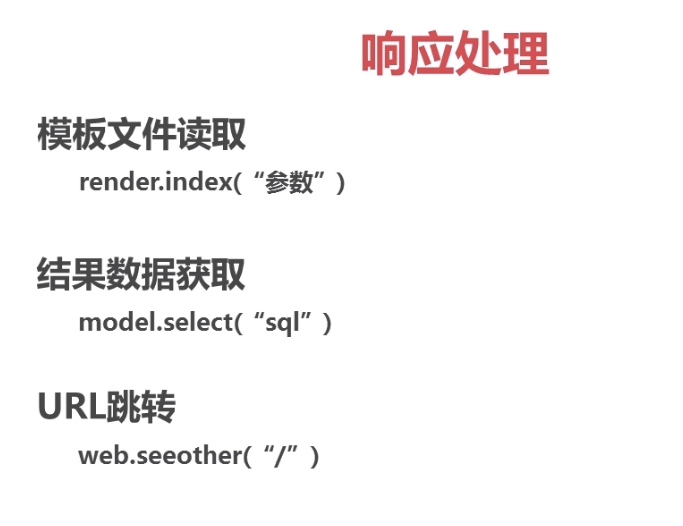
A.模板文件读取
pip install pymysql #python3
定义模板主目录

添加文章路径

无参数render
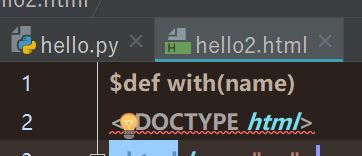
![]()
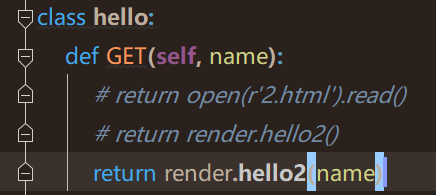
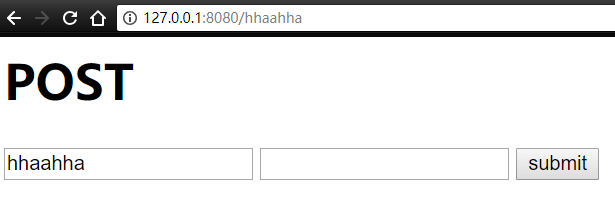
B.获取数据结果

建立数据库信息
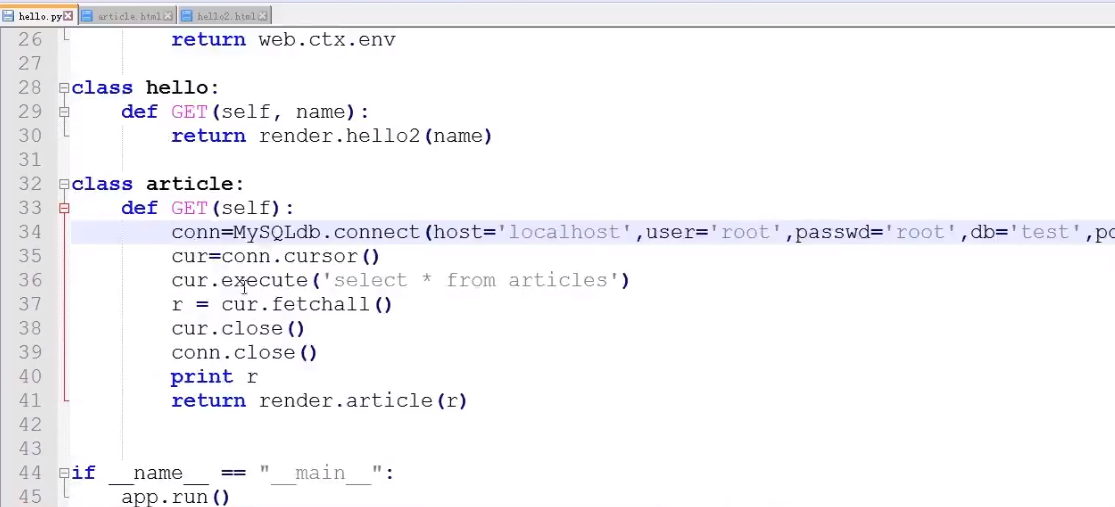
![]()
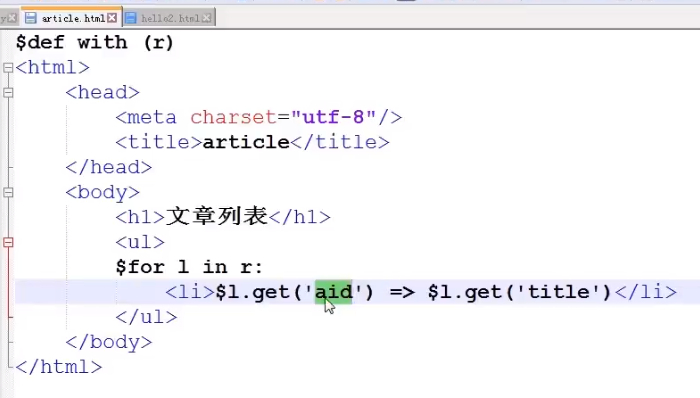
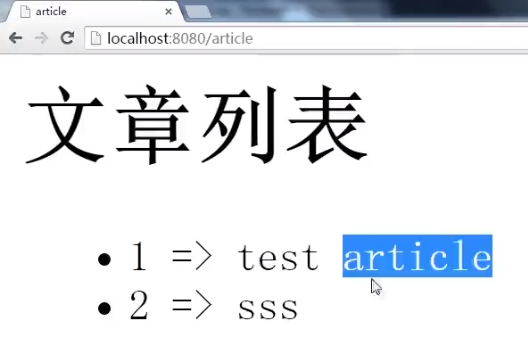
$def with(r)
<html lang="en">
<head>
<title>article</title>
</head>
<body>
<h1>文章列表</h1>
<ul>
$for l in r:
<li>$l.get('aid') => $l.get('title')</li>
</ul>
</body>
</html>新建article.html
import pymysql #python3
pymysql.install_as_MySQLdb()
class article:
def GET(self):
conn =pymysql.connect(host='localhost',user='root',passwd='root',db='py_webpy',cursorclass=pymysql.cursors.DictCursor)
cur=conn.cursor()
cur.execute('select * from articles')
r = cur.fetchall()
cur.close()
conn.close()
print(r)
return render.article(r)
首页跳转

import web
# import MySQLdb #python2
# import MySQLdb.cursors
import pymysql #python3
pymysql.install_as_MySQLdb()
render = web.template.render('templates') #定义模板
urls = (
'/article','article',
'/index', 'index', #精确匹配
'/blog/\d+','blog', #模糊匹配-带组
'/(.*)','hello' #模糊匹配-不带组
) # 注意:url里有多个使用模糊匹配,模糊匹配范围大的要放在小的后面
app = web.application(urls, globals())
class index:
def GET(self):
query = web.input()
# return query
return web.seeother('/article') #跳转到文章页面,也可以跳转外部网站
class blog:
# def GET(self):
# query = web.input()
# return query
def GET(self):
return web.ctx.env
def POST(self):
data = web.input()
return data
class hello:
def GET(self, name):
# return open(r'2.html').read()
# return render.hello2()
return render.hello2(name) #引用模板-带参数
class article:
def GET(self):
conn =pymysql.connect(host='localhost',user='root',passwd='root',db='py_webpy',cursorclass=pymysql.cursors.DictCursor)
cur=conn.cursor()
cur.execute('select * from articles')
r = cur.fetchall()
cur.close()
conn.close()
print(r)
return render.article(r)
if __name__ == "__main__":
app.run()hello.py
三、分析
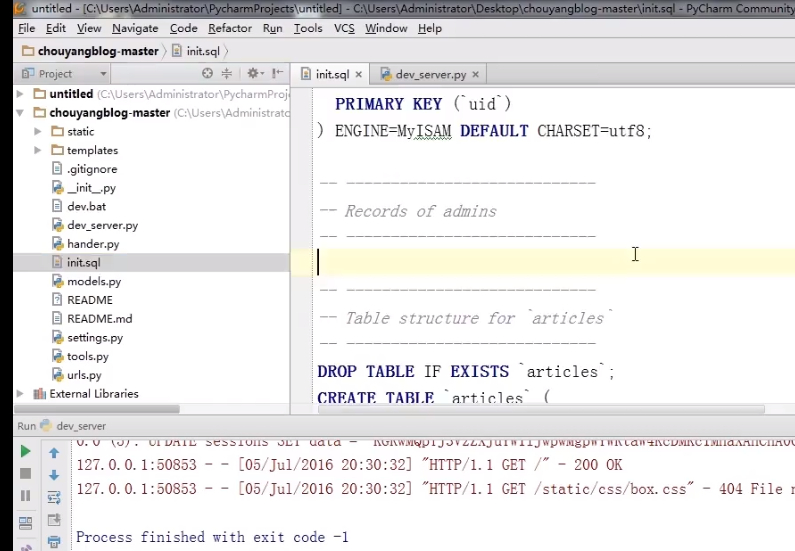

初始化数据库表结构脚本

classname必须有

密码生成一个铭文的
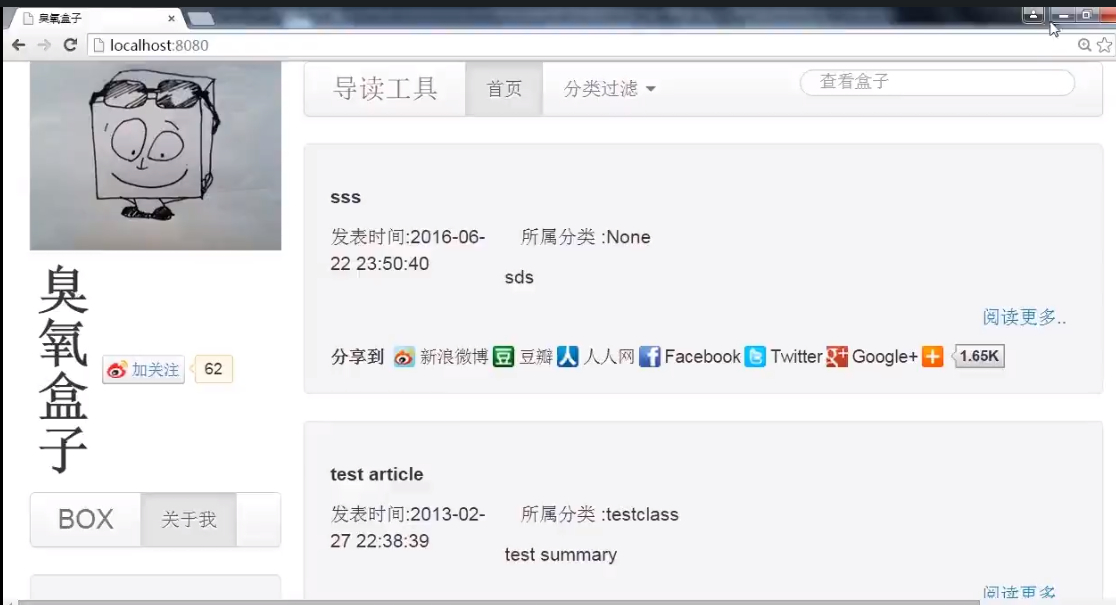
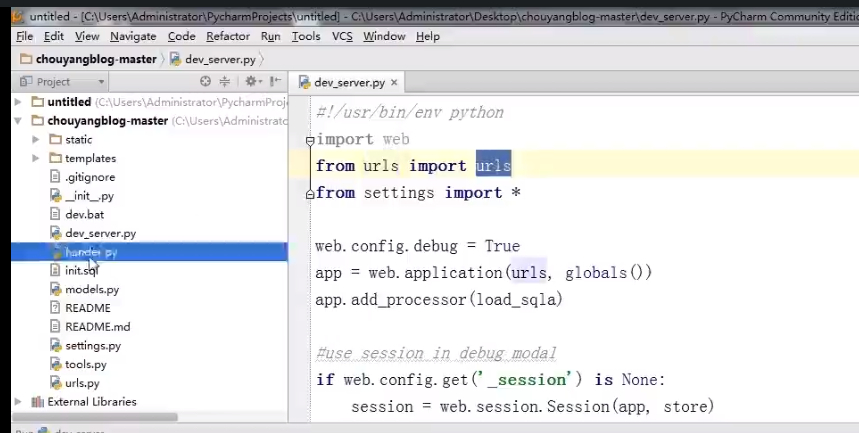
代码分析
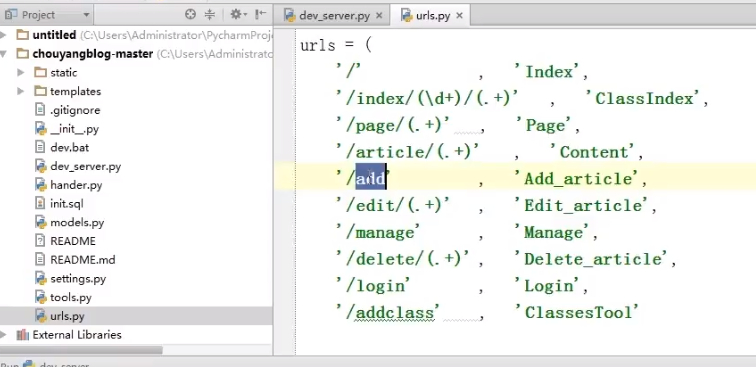
首页内容
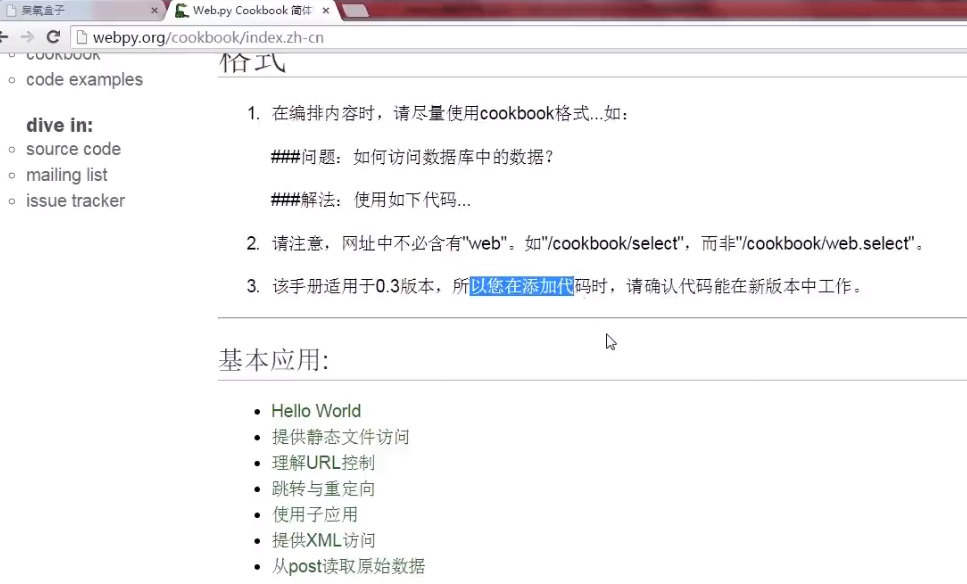
相关
查找的github上相关代码:https://github.com/sunchen009/chouyangblog
完结
来源:oschina
链接:https://my.oschina.net/u/3018050/blog/1944106